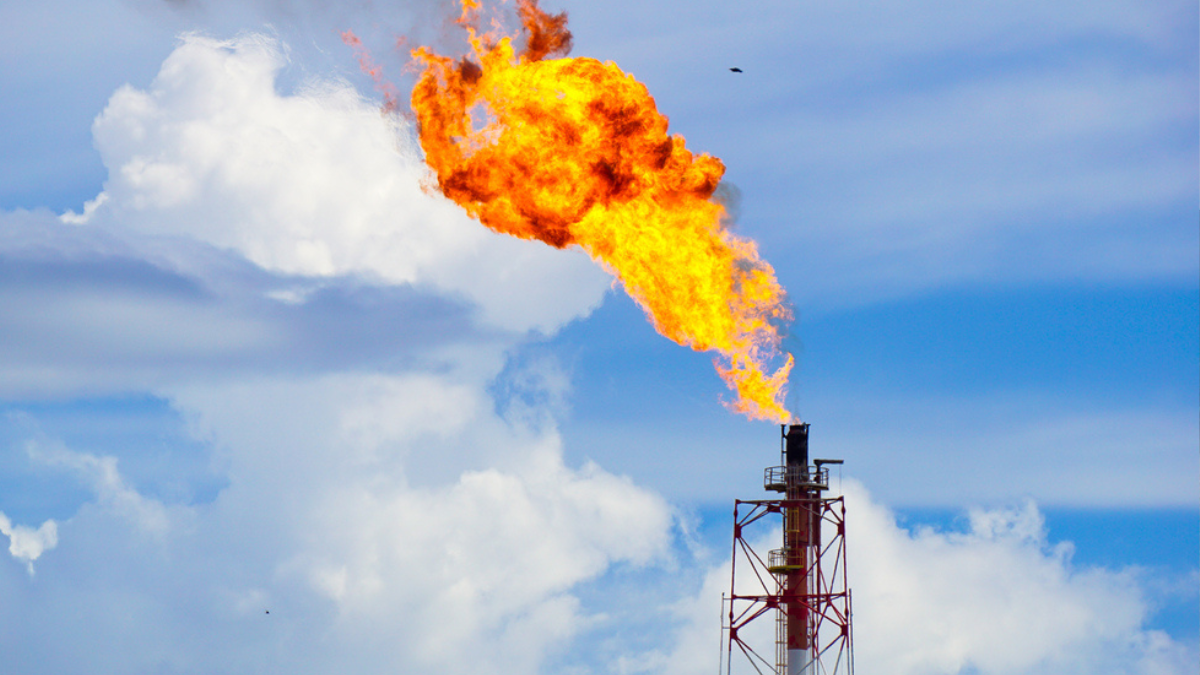In 2023 Africa’s largest oil and gas producer Nigeria made headlines through its bold action to further regulate methane emissions on the oil and gas sector. Oil and gas methane is responsible for 37% of human-derived methane emissions but can easily be eliminated at low or net negative costs.
For Nigeria, achieving the maximum ambition of its new regulations would reduce methane emissions from flaring by 100% by 2030, and fugitive methane from leaks by 95% 2050. In 2018, greenhouse gas emissions from the energy sector were 209 million tonnes of CO2 equivalent. Fugitive emissions from the oil and gas were the largest contributor to Nigeria’s energy sector emissions at 33%. These reductions will comprise a major component of Nigeria’s Nationally Determined Contribution (NDC) targets – which are an unconditional reduction of 20% and conditional reduction of additional 47% with international support.
Nigeria’s ability to regulate oil and gas methane came as a result of integrating action on short-lived climate pollutants (SLCPs) into its national development planning and NDC. This process involved stakeholders responsible for the national budget, development and investment planning, as well as institutional coordination arrangements. Establishing the SLCP National Action Plan enabled implementation of the plan’s 22 SLCP Mitigation Measures to become core features of Nigeria achieving its NDC goals.
The process of establishing the methane mitigation guidelines and monitoring their implementation is being overseen by the Nigeria Upstream Regulatory Petroleum Commission (NURPC). The process required developing a baseline for fugitive methane using the Country Methane Abatement Tool (CoMAT) and developing a methodology and framework for data reporting for methane management.
As of mid-2023, over 70% of oil and gas operators had complied with the new regulations, by submitting a greenhouse gas emissions management plan within 6 months of the regulations start date. The plan must detail at a minimum, the scope of their operations and emission sources, methodologies of emissions quantification, yearly and long-term percentage reductions on emissions; and set a timeline to replace single cycle steam turbines with combine cycle by 2030.
Operators are also required to submit quarterly reports covering fugitive emissions and GHG monitoring reports to NUPRC on a quarterly basis These requirements apply to oil and gas production facilities, export terminals and gas processing and gathering and boosting stations.
Subsequent stages of implementation will require companies to complete greenhouse gas emissions inventories, and annual leak detection and repair (LDAR) inspections, with a five-year phase-out timeline for pneumatic devices.
These standards are now being incorporated into all design, installation and modification operations for oil and gas facilities, so that both new and existing facilities ensure installation and retrofitting of equipment to reduce emissions in line with the guidelines.
To help build inspectors’ capacity to carry out the inspections, the NURPC has been conducting workshops and training on LDAR for inspectors, including field trips to oil and gas facilities. Oil and gas companies are also being invited to participate so they can also understand the inspection process.
Outside of the oil and gas sector Nigeria’s SCLP National Action Plan identifies significant abatement targets. For instance, the plan estimates a 61% reduction in SLCP emissions by 2030 if all abatement (22) measures recommended in the plan are implemented. These targets include recovering 50% of methane recovered from landfills by 2030 reducing open burning of waste by 50% by 2030; reducing 30% of emission intensity in the agricultural sector by 2030; converting 25% of all buses to natural gas by 2030 and phasing out 80% of HFCs by 2045.
